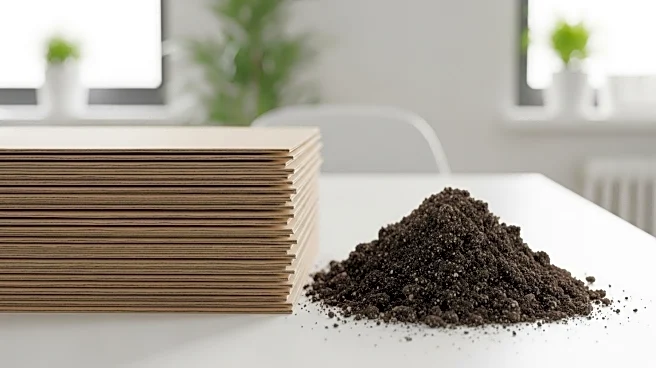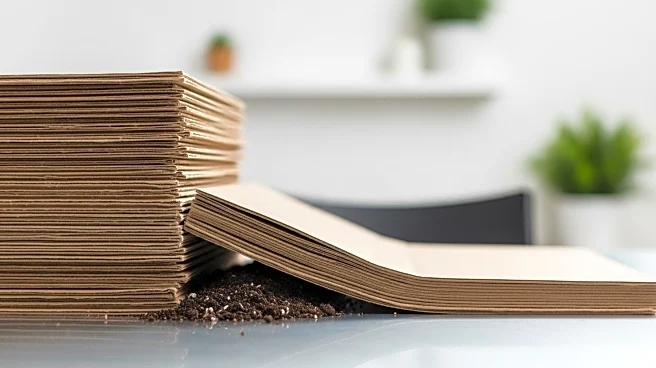What's Happening?
Engineers at RMIT University in Australia have developed a new building material called cardboard-confined rammed earth, which significantly reduces the carbon footprint compared to traditional concrete. This material is composed of cardboard, water, and soil, making it reusable and recyclable. The innovation aims to address the environmental impact of construction, as cement and concrete production contribute to 8% of global emissions. The cardboard-confined rammed earth offers a sustainable alternative for low-rise buildings, utilizing locally sourced materials and reducing waste.
Why It's Important?
The development of cardboard-confined rammed earth represents a significant advancement in sustainable construction practices. By reducing reliance on cement, this material offers a lower carbon footprint and cost compared to concrete, aligning with global net-zero goals. The use of locally sourced materials simplifies logistics and reduces transport costs, making it an attractive option for construction in remote areas. This innovation could revolutionize building design, promoting the use of earth-based materials and contributing to a greener construction industry.
What's Next?
The RMIT University team is ready to partner with various industries to further develop and commercialize cardboard-confined rammed earth. As the material gains traction, it may face challenges related to regulatory approval and market acceptance. However, successful integration into the construction industry could lead to widespread adoption of sustainable building practices. The team is also exploring the use of carbon fiber with rammed earth to enhance strength, potentially expanding the material's applications.











